
Students will create a story based on an image.
- Subject:
- Arts and Humanities
- Education
- Language Education (ESL)
- Material Type:
- Diagram/Illustration
- Lesson Plan
- Provider:
- J. Paul Getty Museum
- Provider Set:
- Getty Education
- Date Added:
- 05/27/2013

Students will create a story based on an image.
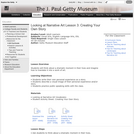
Students will think about a dramatic moment in their lives and imagine how to translate it into a work of art.

Students learn about and discuss the process of taking a photograph.
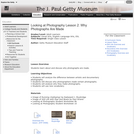
Students learn about and discuss why photographs are made.
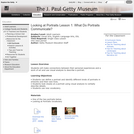
Students will make connections between their personal experiences and a work of art and use visual analysis to describe a portrait.
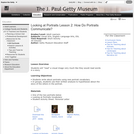
Students will "read" a visual image very much like they would read words in a story.
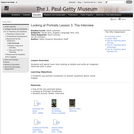
Students will spend more time looking at details and write an imagined interview with a sitter.
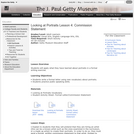
Students will apply what they have learned about portraits in a formal writing exercise.

This lesson, the second in a series, encourages students to think and talk openly about the concept of beauty, particularly as it overlaps with issues of race and racial identity.
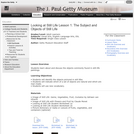
Students learn about and discuss the objects commonly found in still-life paintings.
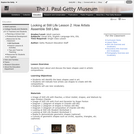
Students learn about and discuss the basic shapes used in artistic compositions.
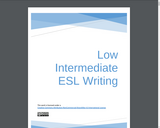
Created for Washtenaw Community College's low intermediate ESL students, this OER writing textbook covers writing sentences, summaries, opinions, and narratives, as well as improving spelling and grammar.

In this activity, students will plan a menu for a Chinese New Year’s Eve dinner using clues about individual dishes cultural significance. Students will read aloud the descriptions of the dishes, and then choose which ones they would want to include in their banquet to best align with traditional Chinese New Years Eve conventions.
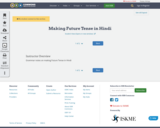
Grammar notes on making Future Tense in Hindi
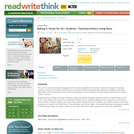
Spark the engagement of English-language learners or reluctant readers with the graphic novel "Maus". The visual information provided by the genre serves as a support for reading and critical engagement.
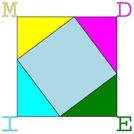
A good way to learn to do math in English is to do math in English. The topics and materials should be accessible but engaging. This gives us incentive to make tangents into gambling, game theory, computers, art, and any other fields where we see connections. Interdisciplinary applied mathematics can be found within these pages.
This book was written for high school students in Japan studying English for Applied Purposes, so that they could potentially take math classes when studying abroad in the future. However, nothing in the book depends on the country.
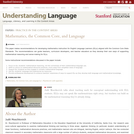
This paper makes recommendations for developing mathematics instruction for English Language Learners (ELLs) aligned with the Common Core State Standards. The recommendations can guide teachers, curriculum developers, and teacher educators as they develop their own ways of supporting mathematical reasoning and sense-making for ELLs.Some instructional recommendations discussed in the paper include: Focus on ELL students' mathematical reasoning, not the correctness of their mathematical language use. Shift to a focus on mathematical discourse practices; move away from simplified views of language. Support ELL students as they engage in complex mathematical language. Use ELL students' language and experiences as resources. Provide professional development to enhance teachers' awareness of ways to support ELs as they develop both language and mathematical knowledge.

This lesson focuses on the concept of "fake news" and the responsibilities of news and media creators and consumers. Students will explore PEN America's News Consumers' Bill of Rights and Responsibilities and read an article about "fake news" that presents strategies on how to approach digital sources.

Students will practice initiating conversations, sharing their personal opinions, and giving their preferences. Students will discuss their daily use of technology and who they stay in contact with on a regular basis. They will practice different scenarios and express how they would handle a situation.

Students will practice initiating conversations, sharing their personal opinions, and giving their preferences. Students will discuss their daily use of technology and who they stay in contact with on a regular basis. They will practice different scenarios and express how they would handle a situation.